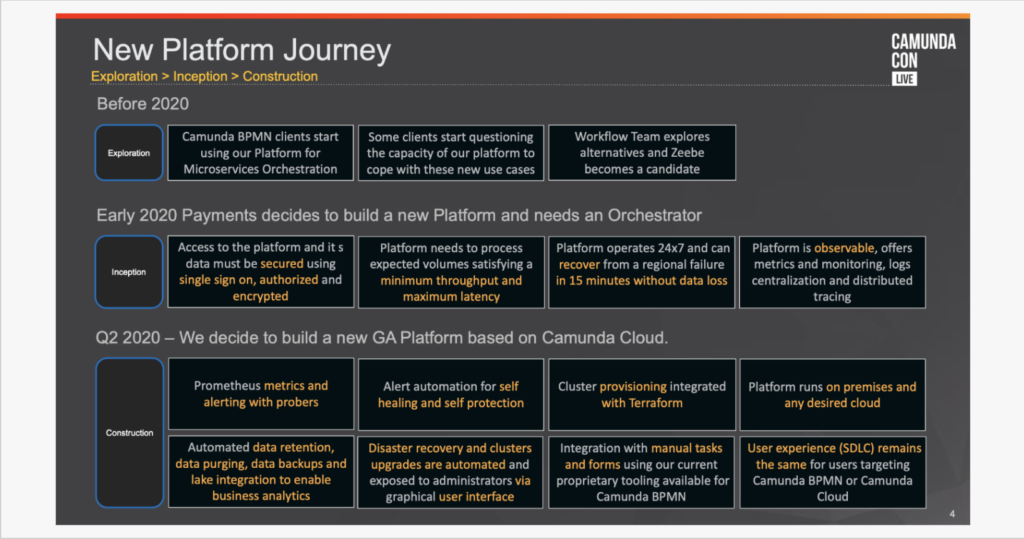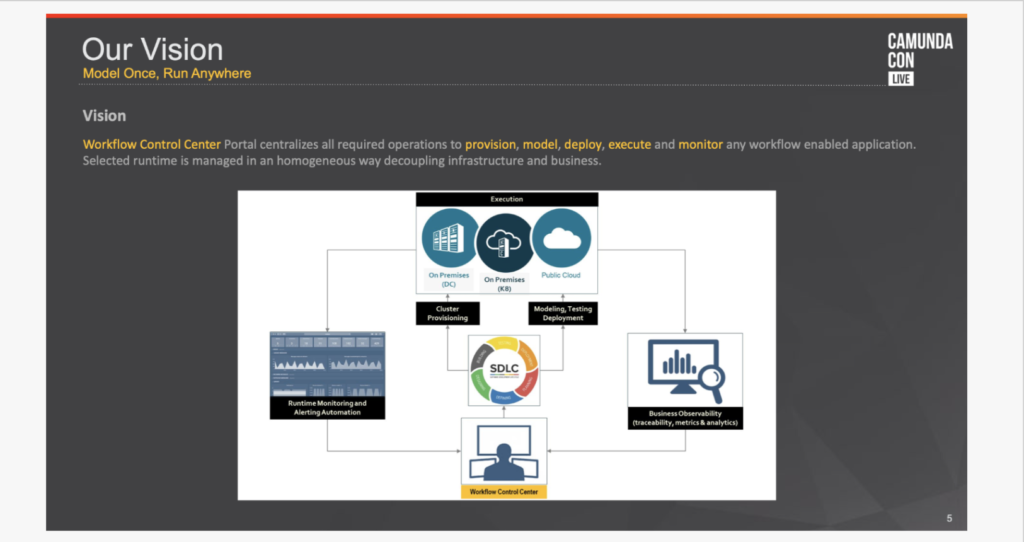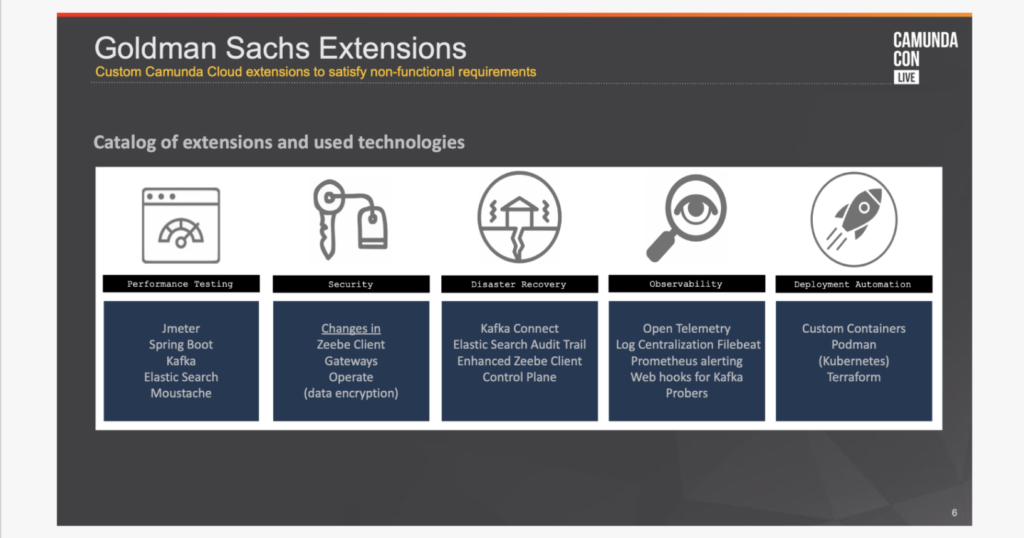*Camunda Platform 8, our cloud-native solution for process orchestration, launched in April 2022. Images and supporting documentation in this post may reflect an earlier version of our cloud and software solutions.
Since 2015, Goldman Sachs has used Camunda Platform 7 as the engine of its microservices orchestration platform intended to deliver financial automation at enterprise scale. With more than 60,000 unique users working with the platform each year, Goldman Sachs sees about six million tasks executed on its microservices automation platform each week.
In 2020, Goldman Sachs’ priorities for the microservices orchestration platform changed. As increasing demands on the service emphasized the need for throughput, scalability, and resilience, Goldman Sachs sought to build a new platform capable of adapting to these use cases. At the same time, the internal payments team at the company recognized a need for a platform that would provide additional security, the ability to recover from disruptive incidents in just minutes without data loss, and an overall smoother payment handling process.
Recognizing the need for a solution that could provide microservice orchestration across all of its teams and meet the changing demands of its clients, Goldman Sachs set out to build a new platform. Goldman Sachs’ Enterprise Process Automation Platform was born.

Why Build a New Platform on Camunda Platform 8?
The vision for the Enterprise Process Automation Platform was to build a platform that centralizes all required operations to provision, model, deploy, execute, and monitor any workflow-enabled application. Building this platform with Camunda Platform 8 as the horizontally scalable BPMN workflow engine would enable a higher level of automation, functionality, and adaptability for both Goldman Sachs and its clients.
Some of the key features of this new platform include:
- Automated data retention, data purging, data backups, and lake integration to enable analytics.
- Cluster provisioning integrated with data forms for better load balancing.
- Alert automation for self-protection and self-healing.
- Mirrored user experience for Camunda Platform 7 and Camunda Platform 8 users for consistency.
- Integration with manual tasks and forms using current Goldman Sachs proprietary tooling to improve process automation.
To ease the transition from Camunda Platform 7 to Camunda Platform 8, Goldman Sachs built a UI that implements a consistent software development life cycle (SDLC) across both platforms. Afterward, Goldman Sachs controls how clients are modeling, testing, and deploying models in order to provide a consistent SDLC to model, publish, and run models.
Finally, it was essential to Goldman Sachs that this new platform offers maximum visibility.
“When the platforms are running, we are provisioning a lot of information that is important to put together. We expose this information in the workflow control center and separate this information into separate categories for the platform provider and clients,” said Javier Sabino, global architecture lead, digitization and workflow engineering, Goldman Sachs.

Extending Camunda Platform 8 with Custom Extensions
Goldman Sachs also extended Camunda Platform 8 to incorporate non-functional requirements for five key categories. Sabino explains:
- Performance Testing: “Clients come to us with non-functional requirements before they even have their services ready. So we invested in a testing harness which allows us to configure clusters, execute services, and produce some reports which will show the best configurations for clusters to serve clients’ purposes.”
- Security: “We integrated Camunda Platform 8 with our single sign-on solution…we also added extensions to support data encryptions for clients.”
- Disaster Recovery: “We invested in a solution that helps Goldman Sachs recover from disasters, such as losing regions, in less than fifteen minutes.”
- Observability: “We have solutions that show you how your workflows are progressing. But we also invested a little bit further. We are extracting a lot of information from the platform to make sure the platform is healthy.”
- Deployment Automation: “We have many clients who have different ways of executing…we needed a way to automate the solution. The most important extension for this has been our custom containers.”
Each of these extensions has added additional layers to Goldman Sachs’ new Enterprise Process Automation Platform, benefitting both internal teams as well as clients; this level of customization is a key benefit of building a platform using Camunda Platform 8.

Adapting with Camunda Platform 8
Goldman Sachs was able to build a multi-purpose, scalable platform with Camunda Platform 8. The Enterprise Automation Platform developed by the company has proven to be resilient, adaptable, and a benefit to both internal and external users.
Want to learn more? Our Camunda Community Summit 2022 expert-led sessions are now available to watch on-demand, including Javier Sabino’s talk on Enabling Technically Challenging Business Use Cases Using Camunda Platform 7 and Camunda Platform 8 at Scale.


Start the discussion at forum.camunda.io